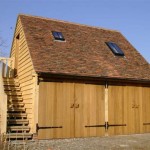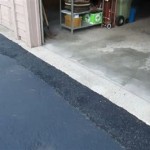How to Lay a Concrete Garage Floor
A well-laid concrete garage floor provides a durable and versatile surface. This guide outlines the process of laying a concrete garage floor, from initial planning to the final curing stage. Careful preparation and execution are crucial for a successful outcome.
Planning and Preparation
Accurate planning is essential for a smooth and efficient process. This involves several key considerations:
*Permits and Regulations:
Check local building codes and obtain necessary permits before commencing any work. Regulations may dictate specific requirements for concrete thickness, reinforcement, and drainage. *Site Assessment:
Evaluate the soil type and existing ground conditions. Professional soil testing may be necessary to determine load-bearing capacity and potential drainage issues. *Material Calculations:
Accurately calculate the volume of concrete required based on the desired slab thickness and area. Consider adding a small percentage for spillage and variations in ground level. *Equipment and Tools:
Gather all necessary tools and equipment, including a concrete mixer, shovels, screeds, floats, trowels, and safety gear such as gloves and eye protection.Preparing the Ground
Proper ground preparation is crucial for a stable and long-lasting concrete slab:
*Excavation:
Excavate the area to the desired depth, ensuring a consistent slope for proper drainage. Typically, a slope of 1/4 inch per foot is recommended. *Compaction:
Compact the excavated soil using a hand tamper or mechanical compactor. This creates a firm base and minimizes settling. *Gravel Base:
A layer of compacted gravel, typically 4 to 6 inches thick, provides a stable base for the concrete, improves drainage, and helps prevent cracking. *Vapor Barrier:
Lay a vapor barrier, such as 6-mil polyethylene sheeting, over the gravel base to prevent moisture from migrating into the concrete slab. Overlap the sheets by several inches and seal the seams with tape.Formwork and Reinforcement
Formwork contains the concrete and ensures the desired shape and thickness of the slab:
*Form Construction:
Construct formwork using 2x4 lumber or other suitable materials. Ensure the forms are securely staked and level to prevent movement during the concrete pour. *Reinforcement Installation:
Place reinforcing materials, such as wire mesh or rebar, within the forms. This adds structural strength and helps prevent cracking. Position the reinforcement on chairs or supports to ensure it is embedded within the concrete. *Expansion Joints:
Incorporate expansion joints where the slab meets existing structures or forms large areas. These joints allow for expansion and contraction of the concrete due to temperature changes, preventing cracking.Pouring the Concrete
The concrete pouring process requires careful coordination and efficient execution:
*Concrete Delivery:
Schedule concrete delivery to coincide with the completion of all preparatory steps. Ensure access for the concrete truck to the pour site. *Concrete Placement:
Place the concrete evenly within the forms, avoiding segregation of the aggregate. Use shovels and rakes to spread the concrete and fill all corners. *Screeding:
Use a screed board to level the concrete surface to the desired height. Work the screed back and forth in a sawing motion to consolidate the concrete.Finishing the Surface
Proper finishing techniques are essential for a durable and aesthetically pleasing surface:
*Bull Floating:
After screeding, use a bull float to further smooth the surface and remove any imperfections. *Edging:
Use an edging tool to create rounded edges along the perimeter of the slab. This prevents chipping and improves appearance. *Grooving:
Create grooves in the surface using a groover to control the location of any potential cracks. *Broom Finishing:
Once the concrete has begun to set, use a broom to create a textured surface for improved traction.Curing the Concrete
Proper curing is critical for developing the concrete's full strength and durability:
*Moist Curing:
Keep the concrete surface moist for at least seven days after pouring. This can be achieved by covering the slab with plastic sheeting, burlap, or by applying a curing compound. *Protection from Elements:
Protect the curing concrete from extreme temperatures, direct sunlight, and rain. *Drying Time:
Allow the concrete to cure completely before subjecting it to heavy loads or traffic. This typically takes 28 days.Sealing the Concrete (Optional)
Applying a sealant provides additional protection against stains, moisture, and chemicals:
*Sealant Selection:
Choose a sealant appropriate for the intended use of the garage floor. *Surface Preparation:
Ensure the concrete surface is clean and dry before applying the sealant. *Sealant Application:
Follow the manufacturer's instructions for applying the sealant. Multiple coats may be required.By following these steps and paying attention to detail, a durable and functional concrete garage floor can be achieved.

Garage Concrete Floor Slab Construction Thickness And Cost The Constructor

Concrete Slab Base For Garage Diynot Forums

Garage Flooring Installation Day 1 Here S How They Did It Between Naps On The Porch

Self Leveling Concrete Preparing For Installation Tips

How To Pour A Garage Floor 11 Steps With Pictures Wikihow

Diy Garage Floor Steps To

Garage Concrete Floor Slab Construction Thickness And Cost The Constructor

Diy Garage Floors

Pouring A Concrete Garage Floor Ed And Raised

Screeding And Insulating A Garage Floor Damp Proof Course Celotex
Related Posts








